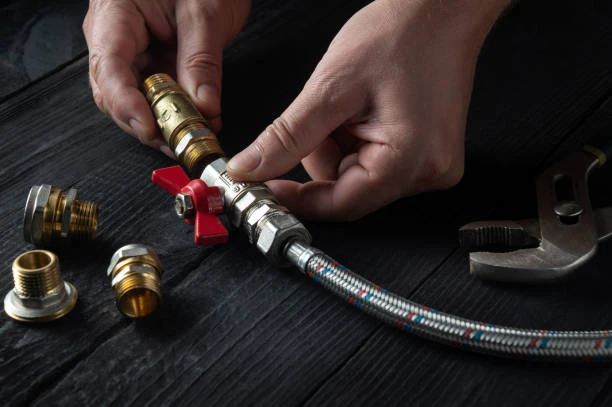Introduction
The safety of drinking water is a vital concern for households and communities alike. With increasing awareness about the dangers of lead exposure, many are shifting to lead free pipes and fittings as a healthier alternative. This article delves into the importance of lead-free plumbing, the benefits of using lead-free materials, and how they can contribute to a safer environment for you and your family.
What Are Lead Free Pipes and Fittings?
Lead free pipes and fittings refer to plumbing components that contain little to no lead. These materials are designed to ensure that the water flowing through them remains safe for consumption. Understanding what constitutes lead-free options is essential for making informed decisions about your plumbing needs.
Common Materials for Lead Free Plumbing
- Copper: A long-standing choice in plumbing, copper is naturally resistant to bacteria and does not leach harmful substances. It’s essential to choose copper that is specifically labeled as lead-free.
- PEX (Cross-Linked Polyethylene): This flexible material is easy to install and resistant to corrosion. PEX is becoming increasingly popular in both residential and commercial plumbing.
- PVC (Polyvinyl Chloride): Commonly used for drainage, PVC can also be part of potable water systems. Ensure that the PVC used is specifically rated for drinking water.
- Stainless Steel: Though generally more expensive, stainless steel is a robust choice that doesn’t corrode or leach contaminants into water.
The Dangers of Lead in Drinking Water
Lead can enter drinking water through old pipes, fixtures, and solder containing lead. The health risks associated with lead exposure are significant. It can cause developmental issues in children, kidney problems in adults, and has been linked to high blood pressure. Understanding the sources of lead contamination is crucial for maintaining safe drinking water.
Benefits of Lead Free Alternatives
Switching to lead free pipes and fittings offers numerous advantages:
- Health Safety: The primary benefit is the reduction in health risks associated with lead exposure. Families can have peace of mind knowing their water supply is safe.
- Environmental Impact: Lead-free materials contribute to a healthier ecosystem. By eliminating lead from plumbing systems, we reduce the potential for environmental contamination.
- Cost-Effectiveness: While lead-free options may have a higher upfront cost, they tend to be more durable and require less maintenance over time, leading to long-term savings.

Regulations and Standards for Lead Free Plumbing
In the United States, various regulations govern the use of lead in plumbing materials. The Safe Drinking Water Act and NSF/ANSI standards provide guidelines to ensure that products meet safety requirements. Always look for certification labels when purchasing plumbing materials to ensure they are lead-free.
Installation of Lead Free Pipes and Fittings
Installing lead free pipes and fittings might seem like a daunting task, but it can be manageable with the right approach. Here are some steps to guide you through the installation process:
- Planning: Assess your existing plumbing system. Determine what needs to be replaced and gather the necessary materials.
- Choosing the Right Materials: Select lead-free options that fit your plumbing needs and budget.
- Installation: Follow best practices during installation. Ensure that all connections are secure and properly sealed to prevent leaks.
- Professional Help: If you’re uncertain about the installation process, consider hiring a professional plumber familiar with lead-free systems.
Maintenance of Lead Free Plumbing Systems
Maintaining your lead free pipes and fittings is essential for ensuring their longevity and effectiveness. Here are some tips for regular maintenance:
- Routine Checks: Regularly inspect your plumbing for leaks, corrosion, or unusual discoloration of water.
- Flushing the System: Periodically flushing your plumbing system can help remove any sediment buildup and ensure clean water flow.
- Upgrading Old Pipes: If your home has older plumbing, consider replacing it with lead-free materials to avoid contamination.
Conclusion
The shift to lead free pipes and fittings is an important step in safeguarding your health and ensuring access to safe drinking water. By choosing lead-free materials, you not only protect your family but also contribute to a healthier environment. It’s time to take action and make the switch to lead-free plumbing.
FAQs
- What are lead free pipes and fittings?
- Lead free pipes and fittings are plumbing components that contain little to no lead, ensuring safe drinking water.
- What materials are considered lead free?
- Common lead-free materials include copper, PEX, PVC, and stainless steel.
- How can I check if my plumbing contains lead?
- Homes built before 1986 are more likely to have lead pipes. You can also use lead testing kits available at hardware stores.
- Are lead free plumbing options more expensive?
- While the initial cost may be higher, lead-free materials often save money in the long run due to their durability and reduced health risks.
- Can I install lead free pipes myself?
- Yes, with the right tools and knowledge, many homeowners can install lead-free plumbing. However, it’s wise to consult a professional if you’re unsure.


















